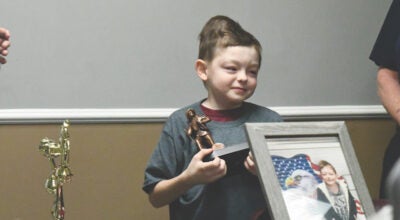Ballet alive and well in Chilton
Published 8:39 pm Friday, November 30, 2012
Recently I watched a “60 Minutes” episode about classical ballet becoming a dying field. The story focused on the New York City Ballet and took cameras backstage to the rigid yet rewarding life of dancers devoting their time to an art that many have deemed a dying field.
The NYC Ballet’s ballet-master-in-chief Peter Martin explained how he repeatedly faces the challenge of attracting a younger crowd to show up and fill the seats during a performance.
The story intrigued me, as I spent the large majority of my life in a dance studio perfecting the art of classical ballet that I fell in love with at a very early age.
Although it was hard, often tiring and extremely disciplined, it was rewarding and I loved it.
There was nothing that could happen throughout my day that couldn’t be cured by dancing in the studio every afternoon. I didn’t necessarily love classical music, wearing tights was always a bit strange and the bobby pins I had to wear to keep my ballet bun in place always hurt the back of my head but once I arrived at the studio every day, I felt like I was home.
The “60 Minutes” excerpt highlighted professional dancers who make a career out of dancing, often showing up to a studio for a full day of classes and rehearsal to perform for an older audience of a generation who grew up appreciating the arts but is dying out.
Martin’s challenge is what will happen when the older generation goes away? Where will the younger audience come from?
My ballet shoes are rarely used these days with a full-time job and a hectic schedule that keeps me occupied for long hours throughout the day and I can’t say that I wear my hair in a bun anymore or listen to loads of classical music. However, there is nothing compared to attending a production of a classical ballet such as Swan Lake, Giselle or the holiday production of the Nutcracker.
The ballet tells a story and even though there is no talking, the guys often wear tights that are peculiar and productions often seem to have no time-limit, the challenge for the audience is figuring out the story. The dancer’s goal is to make everything appear effortless but the audience’s job is to appreciate the work the dancer is putting forth to make everything beautiful as they perform at their best caliber for the audience before them.
The arts, including classical ballet, need families to trek to see them, to purchase tickets to view a production that tells a story and to support an art that has been around since King Louis XIV.
Thankfully, Chilton County has lots of artistic talent and many resources to view the arts both in person and online.
One in particular is Clanton Festival Ballet Arts Artistic Director Anna Curtis, who is working hard to bring classical ballet training to a younger generation of eager ballerinas.
Curtis teaches both male and female students from an early age, the foundation of classical ballet that requires determination and discipline.
“Ballet is a beautiful art form, but it does require work,” Curtis said.
Curtis will have a group of 12 dancers performing at the Clanton Christmas tree lighting on Dec. 6 and plans to have a spring production of the “Little Red Riding Hood” in May at the Clanton Conference and Performing Arts Center at Clanton’s Jefferson State Community College Campus.
For those interested in finding out more information about Curtis’ ballet program contact her at (205) 294-2781 or visit http://festivalballetarts.webs.com.
Curtis also encourages those interested in finding out about classical ballet to research the history of ballet as well as gain familiarity with classical ballets through resources like DVD’s and YouTube
“There are a lot of full-length classical ballets you can watch online,” Curtis said. “It is amazing the resources out there to learn about the arts.”
Although ballet is not for everyone, when the curtain goes up and the music begins to play for the dancer to effortlessly glide across the stage it is words like “bravo” and “encore” that propel the dancer to give their all, the audience member to feel a particular emotion and the arts to continue on.
–Emily Etheredge is a staff writer for The Clanton Advertiser.






